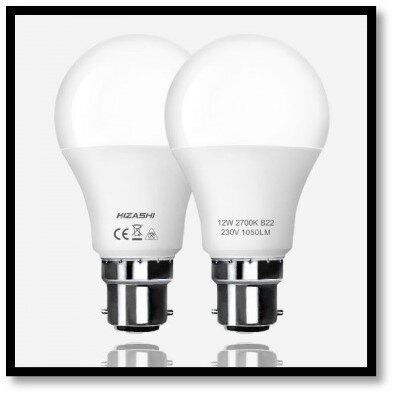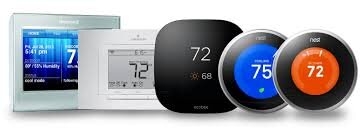Household Environmental Sustainability: Save Energy and Money by Emma Fain
Roughly 20% of greenhouse gas emissions is residential in the United States (Goldstein et al., 2020). Fortunately, you can reduce your carbon footprint by making environmentally sustainable choices that are rewarding to your pocket. Although small changes may not appear to make a large impact on the world, over time a significant amount of energy and money can be saved.
Making a few tweaks to your home can cut costs and save energy in the long-term by a combination of replacing and installing energy efficient household items. Looking for products certified as ENERGY STAR by the U.S. Environmental Protection Agency (EPA) and U.S. Department of Energy ensures both energy efficiency and economy.
Smart Thermostat
According to Jiakang Lu and others at the University of Virginia, the largest source of residential energy consumption comes from heating, ventilation, and cooling (HVAC). Installing a sensing technology, known as smart thermostats, can be energy efficient and save money. This technology works by turning off the home’s HVAC system by using door sensors installed throughout the home. On average, this device can save 28% of energy and can cost as little at 25 dollars over the counter. In a year, the cost of this technically could potentially cut annual electric air-conditioning by half. The majority of ENERGY STAR smart thermostat products are between 45 and 160 dollars on Amazon.
Don’t have the money or time to install a smart thermostat? By turning off the HVAC system when sleeping or away from home can save up to 30% of the HVAC energy, saving an average of 15 dollars per month. In the hot summer months, change your temperature dial to a higher temperature, such as 80 degrees Fahrenheit, when you are leaving your home to save energy and cut costs.
Household Lights
The amount of energy you save depends on the type of light bulb you use. According to the Department of Energy, the most economical choice is the 12 Watts (W) light-emitting diodes (LED) light bulb. The 12W LED light bulb is 80% more efficient than 60W traditional incandescent bulbs and costs only $1.32 to operate for 1,000 hours. Whereas a 60W incandescent light bulb costs $6.60 to operate for 1,000 hours. This cost may seem insubstantial, but overall, the use of a single 60W traditional incandescent light bulb is $46 more per year than a 12W LED light bulb. In addition, the 12W LED light bulb lasts 10 times longer, which can also cut costs from replacing light bulbs.
Most people think of turning off lights when we leave a room to save energy and reduce costs. However, the amount of energy saved depends on the light bulb being used. For example, incandescent lights are the least energy efficient. Only 10% of the energy is light while the other 90% of the energy is heat. Therefore, turning off the lights will keep the room cooler and require less cooling during the summer. Although it is a good practice to conserve energy and always turn off the light, LED lights are so energy efficient that forgetting to turn off lights will result in little energy lost and little cost saved.
Water Use
According to the EPA, you can save up to 30% of indoor water use with high-efficiency appliances and plumbing fixtures. One way to save money on water and energy bills is to repair all leaks in your home. For example, a leaking toilet can waste up to 200 gallons of water per day. Another option is to install low-flow faucet aerators and showerheads to save several hundred gallons of water per year. Low-flow faucet aerators cost only 5 to 8 dollars and are easy to install by simply screwing the aerator to the faucet head. The aerator limits the water flow and creates a stream mixed with water and air. As a result, less water and energy are used.
Another option is to replace standard washing machines that use 20 to 30 gallons of water per load of laundry with washing machines certified as ENERGY STAR. Washing machines certified as ENERGY STAR use only 10 to 15 gallons of water per load of laundry. This may especially save money and energy to those households with washing machines more than 10 years old, costing over 135 dollars each year in utility bills. Energy efficient washing machines not only save money and reduce your carbon footprint, but also increase the life span of your clothes.
References
Lu, Jiakang, et al. "The smart thermostat: using occupancy sensors to save energy in homes." Proceedings of the 8th ACM conference on embedded networked sensor systems. 2010.
Goldstein, B., Gounaridis, D., & Newell, J. P. (2020). The carbon footprint of household energy use in the United States. Proceedings of the National Academy of Sciences.



